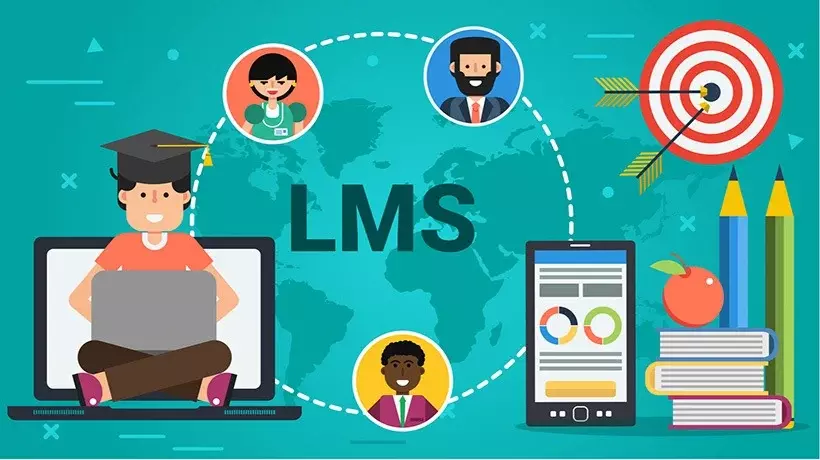The introduction of a Learning Management System (LMS) can bring about changes for any organization, offering a simplified platform for managing and delivering training and development programs. However, organizations often wonder about the outcomes and benefits they can anticipate after implementing an LMS. This blog post will explore some aspects to look forward to following LMS implementation.
The Learning Management System called LMS can be used for performing a number of different tasks ranging from administration to tracking training various programs including learning and developmental programs, among many other programs. Different types of institutions are in the fray performing different sorts of tasks and are at liberty to use the Learning Management System for effective implementation of tasks.
LMSs are used by educational institutions, businesses, and other organizations to deliver training to their employees, students, or members.
In This Article
Improved Accessibility and Convenience
One of the advantages of adopting an LMS like Blackbaud or any other is enhanced accessibility and convenience for both learners and administrators. With an LMS in place, learners have the flexibility to access training content from anywhere at any time, thereby enabling self-paced learning. It means that employees are no longer required to attend in-person training sessions or wait for time to access learning materials. Instead, they can simply log into the LMS whenever it suits them best and access their required courses.
For administrators, an LMS streamlines the process of managing and delivering training programs. They can easily upload content. Update existing material, effortlessly track the progress of the learners, and generate comprehensive reports on training completion rates. Consequently, thai eliminates tracking requirements while significantly reducing the burden, allowing administrators more time to focus on crucial tasks.
Enhanced Engagement and Collaboration
An LMS also offers the opportunity to improve learner engagement and collaboration significantly. Employees can connect with their peers, exchange knowledge, and collaborate on projects by incorporating features such as discussion forums, chat rooms, and social learning tools. It enhances the learning experience. Also, it fosters a culture of continuous learning and knowledge sharing within the organization.
Moreover, many LMS platforms provide gamification elements that make learning more enjoyable and engaging. Learners can earn badges, unlock achievements, and even compete with their colleagues to add fun and motivation to learning. The gamification aspects greatly boost learner engagement and retention rates, leading to training outcomes.
Tailored Learning Paths
Another significant advantage of an LMS is its ability to deliver learning paths for learners. Everyone receives the content in training programs regardless of their existing knowledge or skills. However, with an LMS in place, learners can undergo assessments to identify their strengths and weaknesses. Based on these assessments, customized learning paths are created specifically addressing their needs.
The approach it takes into account is all the more important as it plays a vital role in imparting impactful and effective training. It allows them to concentrate on areas where improvement is needed while bypassing content they are already proficient in.
As a result, learners have the flexibility to progress at their own pace and efficiently achieve their learning goals.
Accessing Data & Analytics
Using a Learning Management System (LMS) also gives organizations the advantage of accessing data and analytics, which allows them to monitor metrics such as completion rates, performance improvement, and feedback from learners. This information empowers organizations to assess the effectiveness of their training programs, identify areas that need improvement, and make data-driven decisions.
For example, organizations can investigate the underlying reasons if a particular course has a low competition rate. Implement changes to enhance engagement. Similarly, organizations can dedicate resources to improve those areas if specific learning resources or instructors consistently receive feedback. They can also identify performing employees. Consider them for leadership development programs or other growth opportunities.
Foster a Positive Mindset
Moreover, implementing an LMS fosters an organization’s mindset of improvement and adaptability. Given that learning needs and technologies are evolving, organizations must be agile and alert in responding to these changes. An LMS facilitates updates and modifications in training content to ensure it remains up to date with industry trends and knowledge.
Additionally, it is also important for organizations to proactively seek feedback from learners and trainers to identify areas that are required for improvement. By doing so, they can make changes accordingly. It is critical to evaluate the effectiveness of training programs and make adjustments as needed in order for the Learning Management System (LMS) to continue providing value over time.
Conclusion
Integrating a Learning Management System (LMS) can provide benefits for organizations, such as improved accessibility and convenience and increased engagement and collaboration. It allows organizations to offer learning paths for learners and utilize data-driven insights to enhance their training programs. Going forward, organizations should adopt a mindset of improvement and adaptability to fully leverage their LMS’s advantages. By embracing these ideals, organizations can create a learning environment that empowers employees to develop and flourish.
Overall, implementing an LMS can be a major investment, but it can also be a very rewarding one. Organizations that are willing to put in the time and effort to implement an LMS can expect to see a significant return on their investment.




